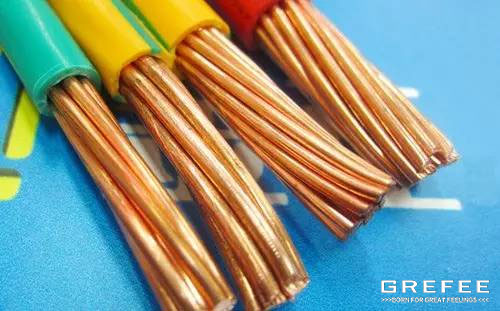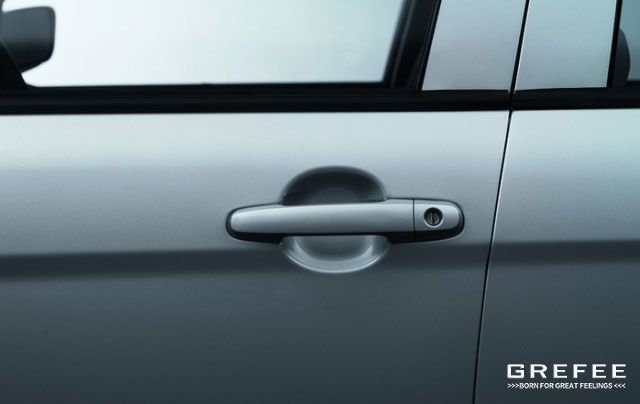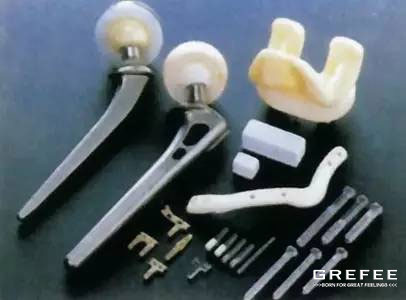Summary of characteristics and uses of iron, zinc, magnesium, aluminum, copper and other metals

Posted on : Feb 3 , 2023 By GREFEE

Iron casting — flowability
There are few people pay attention to the sewer cover. The reason why iron casting is being widely used is that it has excellent flowability, and the characteristic of easy to cast. Iron casting actually is the name of a mixture of many elements, including carbon, silicon and iron. The higher the carbon content, the better the flow characteristics in the pouring process. The carbon occurs in two forms, graphite and iron carbide.
The existence of graphite makes the sewer cover has good weldability. The rust often occurs on the top surface, so it is usually be polished. Even so, there are still a variety of measures to prevent the corrosion from happening during the pouring process, which is to add a layer of bituminous coating on the surface of casting. The bituminous will run out the small holes on the surface of iron casting in case the occurring of corrosion. The traditional process of producing sand mold casting materials is now used by many designers in other newer and more interesting fields.
Material characteristics: great flowability, low cost, good weldability, low curing shrinkage, brittle, high compression strength, good mechanical processing performance.
Typical appliance: with hundreds of application history, iron casting has been involved into multiple fields, including construction, bridge, engineering parts, household, kitchen appliances.
Stainless steel — a revolution of steel

There are some alloy containing into the stainless steel made of chromium, nickel and other metal elements. The chromium content contributes to the characteristics of stainless steel and form a strong and chromium oxide coating with self-repairing ability on the surface of alloy. This film is invisible. The ratio of stainless steel to nickel is 18:10
At the beginning of the 20th century, stainless steel was introduced into the field of product design as the raw material. There are many new products designed that take advantage of the characteristics of toughness and corrosion resistance, involving many fields that had never been involved before. It is a revolutionary design series: for example, equipment that can be reused after disinfection appears in the medical industry for the first time.
Stainless steel is divided into four main types: austenite, ferrite, ferrite austenite (composite) and martensite. The stainless steel used in household appliances is basically austenitic.
Material characteristics: health care, corrosion resistance, fine surface treatment, high rigidity, forming through various processing technologies, difficult to cold process.
Typical applications: austenitic stainless steel is mainly used in household products, industrial pipelines and building structures; Martensitic stainless steel is mainly used for making tools and turbine blades; Ferritic stainless steel is anti-corrosion, mainly used in durable washing machines and boiler parts; Composite stainless steel has stronger corrosion resistance, so it is often used in corrosive environments.
Zinc – 730 pounds in a lifetime

Zinc, silver and slightly bluish gray, is the third most widely used nonferrous metal after aluminum and copper. According to the statistics of the United States Bureau of Mines, 331 kg of zinc will be consumed per person in his lifetime. Zinc has a low melting point, so it is also a very ideal casting material.
Zinc casting is common in our daily life: materials, faucets, electronic components, under the surface layer of doorknob and watch. Due to the high corrosion resistance, it can be used as the surface coating material of steel. In addition, it is also an alloy material for synthesizing brass with copper. Its corrosion resistance is not only applied to steel surface coating, but also helps to strengthen our human immune system.
Material characteristics: health care, corrosion prevention, excellent castability, excellent corrosion resistance, high strength, high hardness, cheap raw materials, low melting point, creep resistance, easy to form alloy with other metals, health care, brittle at room temperature, ductility at about 100 ℃.
Typical application: electronic product components. Zinc is one of the alloy materials to form brass and it also has the characteristics of sanitation and corrosion resistance. In addition, zinc is also used in roofing materials, photo engraving discs, mobile phone antennas, and shutter devices in cameras.
Modern materials – aluminum (AL)

Compared with gold, which has been used for 9000 years, aluminum, a white metal with slight blue light, can not be mentioned in the same breath,. Aluminum was invented and named in the early 18th century. Unlike other metal elements, aluminum does not exist in nature, but is extracted from bauxite containing 50% aluminum oxide (also called bauxite). Aluminum, which exists in minerals in this form, is also one of the most abundant metal elements on our earth.
When the aluminum being firstly known by us, people did not use it instantly to produce products. This high-tech material was gradually used more and more when a bunch of products came out for its unique functions and features. Although it does not have a long history, the aluminum products now have been exceeded than the sum of other non ferrous metal products.
Material characteristics: flexible and plastic, easy to make alloy, high strength weight ratio, excellent corrosion resistance, easy to conduct electricity and heat, recyclable.
Typical applications: vehicle skeleton, aircraft parts, kitchen appliances, packaging and furniture. It is also often used to reinforce some large building structures, such as the statue of Cupid on Piccadilly Circus in London and the top of Chrysler Motor Building in New York
Magnesium alloy – ultra-thin aesthetic design

Magnesium is an extremely important nonferrous metal, which is lighter than aluminum and can form a high-strength alloy with other metals successfully. Magnesium alloys have the light specific gravity, high specific strength and specific stiffness, good thermal conductivity, good damping and damping and electromagnetic shielding performance, easy processing and molding, and easy recovery.
However, for a long time, due to the limitation of high price and technical, only a small amount of magnesium and magnesium alloys have only been used in aviation, aerospace and military industries, so it is also the “noble metals”. In the industry. Nowadays, magnesium is the third largest metal engineering material after steel and aluminum, and is widely used in aerospace, automotive, electronics, mobile communications, metallurgy and other fields. Magnesium will become more important in the future due to the increase of production costs of other structural metals.
The proportion of magnesium alloy is 68% of aluminum alloy, 27% of zinc alloy and 23% of steel, which is commonly used in automobile parts, 3C product shells, building materials, etc. Most ultra-thin notebook computers and mobile phone cases are made of magnesium alloy.
Since the last century, human beings still have an obsesses with metal texture and luster. Although plastic products can form a metal like appearance, the luster, hardness, temperature and texture are still different. As a new type of metal material, magnesium alloy gives people a feeling of high-tech products.
The corrosion resistance of magnesium alloy is 8 times of that of carbon steel, 4 times of that of aluminum alloy, and more than 10 times of that of plastics. The corrosion resistance of magnesium alloy is the best among alloys. The common magnesium alloys are non combustible, especially when it is used on the parts of steam turbine vehicles and building materials, which can avoid instantaneous combustion.
The reserves of magnesium in the crust rank eighth. Most of the magnesium raw materials are extracted from seawater, so it maintains a stable and sufficient amount of magnesium.
Material characteristics: lightweight structure, high rigidity and impact resistance, excellent corrosion resistance, good thermal conductivity and electromagnetic shielding, good incombustibility, poor heat resistance, and simple recycling.
Typical applications: aerospace, automotive, electronics, mobile communications, metallurgy and other fields.
Copper — the partner of human beings

Copper is a versatile metal, which is used to make many applications in our life. Many of tools and weapons at the early stage were made of copper. “copper” originates from a place called Cyprus, which is an island rich in copper resources. People use the abbreviation Cu, name of the island to name it, so copper has the current code.
Copper is critical for modern society as it is widely used in building structures as a carrier of power transmission. In addition, it has been used in different parts of world with different cultural backgrounds as raw materials for making body decorations for thousands of years. From the initial simple decoding and transmission to the later key role in complex modern communication applications, this malleable and orange metal has been through the age of our development and progress. Copper is an excellent conductor, of which the conductivity is only inferior to silver. Copper is the oldest metal for human use, second only to gold. To a large extent, this is because it is easy to develop the copper deposits and the copper industry is relatively easy to separate from the copper mine.
Material characteristics: good corrosion resistance, excellent heat conduction, electrical conductivity, hardness, flexibility, ductility, and unique effect after polishing.
Typical applications: wires, engine coils, printed circuits, roofing materials, pipe materials, heating materials, jewelry, cooking utensils. It is also one of the main alloy components for making bronze.
Chromium – post-treatment of high finish

As the most common form of chromium in stainless steel to enhance the hardness of stainless steel, it is used as an alloy element. Chromium plating process includes three types: decorative coating, hard chromium coating and black chromium coating. Chromium coating is widely used in the engineering field. Decorative chromium coating is usually plated outside the nickel layer as the top layer, and the coating has a delicate polishing effect like a mirror.
As a decorative post-treatment process, the thickness of chromium coating is only 0.006mm. Therefore, you must fully consider the dangers of this process when using. In recent ten years, the trend of hexavalent decorative chromium water has been replaced by trivalent chromium water gradually, for the former has very strong carcinogenicity, while the latter is considered to be relatively less toxic.
Material characteristics: extremely high finish, excellent corrosion resistance, hard and durable, easy to clean, low friction coefficient.
Typical application: decorative chromium plating is the plating material of many automotive components, including door handles and buffers. It is also used in bicycle parts, bathroom faucets, furniture, kitchen appliances, tableware, etc. Hard chrome plating is more used in industrial fields, including RAM in operation control block, jet engine components, plastic molds and shock absorbers. Black chrome plating is mainly used for instrument decoration and solar energy utilization.
Titanium – light and strong

Titanium is light weighted, yet very tough and corrosion resistant. It keeps its color for life at room temperature. Titanium’s melting point is close to that of platinum, so it is often used in aerospace military precision components. With electric current and chemical treatment, it will have different colors. Titanium is resistant to acid and alkali corrosion. After being soaked in aqua regia for several years, it is still shiny.
If the stainless steel contains titanium, only around 1%, the corrosion resistance can be largely improved. Titanium has low density, good corrosion resistance, and is resist to high temperature. The density of titanium is half of that of iron and the strength is close to that of iron. In addition, titanium is not only resistant to high temperature, but also resistant to low temperature. It still can maintain a high level of strength in a wide temperature range, -253℃~500℃. These advantages are necessary for the aerospace metals. The titanium alloy is the ideal material for making the shell of the rocket engine and the good materials of artificial satellites and spaceships include “space metal”. Therefore, it has become a prominent rare metalthe since the 1950s.
Titanium is a pure metal so that no chemical reaction will occur when contacting with materials.. That is to say, it will not cause human allergy after long-term contact with people as the titanium has high corrosion resistance and stability. It is the only metal that has no impact on human autonomic nerves and taste, and is called “biophile metal”.
The hardest thing would be that it is difficult to refine, which mainly because titanium can combine with oxygen, carbon, nitrogen and many other elements at high temperatures. So, it is once regarded as a “rare metal”. In fact, the content of titanium accounts for about 6 ‰ of the weight of the crust, more than 10 times more than the sum of copper, tin, manganese and zinc.
Material characteristics: extremely high strength, excellent corrosion resistance in weight ratio, difficulty in cold working, good weldability, about 40% lighter than steel, 60% heavier than aluminum, low conductivity, low thermal expansion, and high melting point.
Typical application: golf clubs, tennis rackets, portable computers, cameras, luggage, surgical implants, aircraft skeleton, chemical appliances and maritime equipment. In addition, titanium is also used as a white pigment for paper, painting and plastics.
MORE BOLG
Insert mold in injection mold service
What are advantages and disadvantages of Zinc alloy and Aluminum alloy?
Inspection standards for injection molded partappearance
How to judge the quality of your plastic products?
Inspection standards for CNC machining
To ensure that your products are 100% qualified
Categories

Try GREFEE now,for free
We keep your uploaded files confidential and secure.


